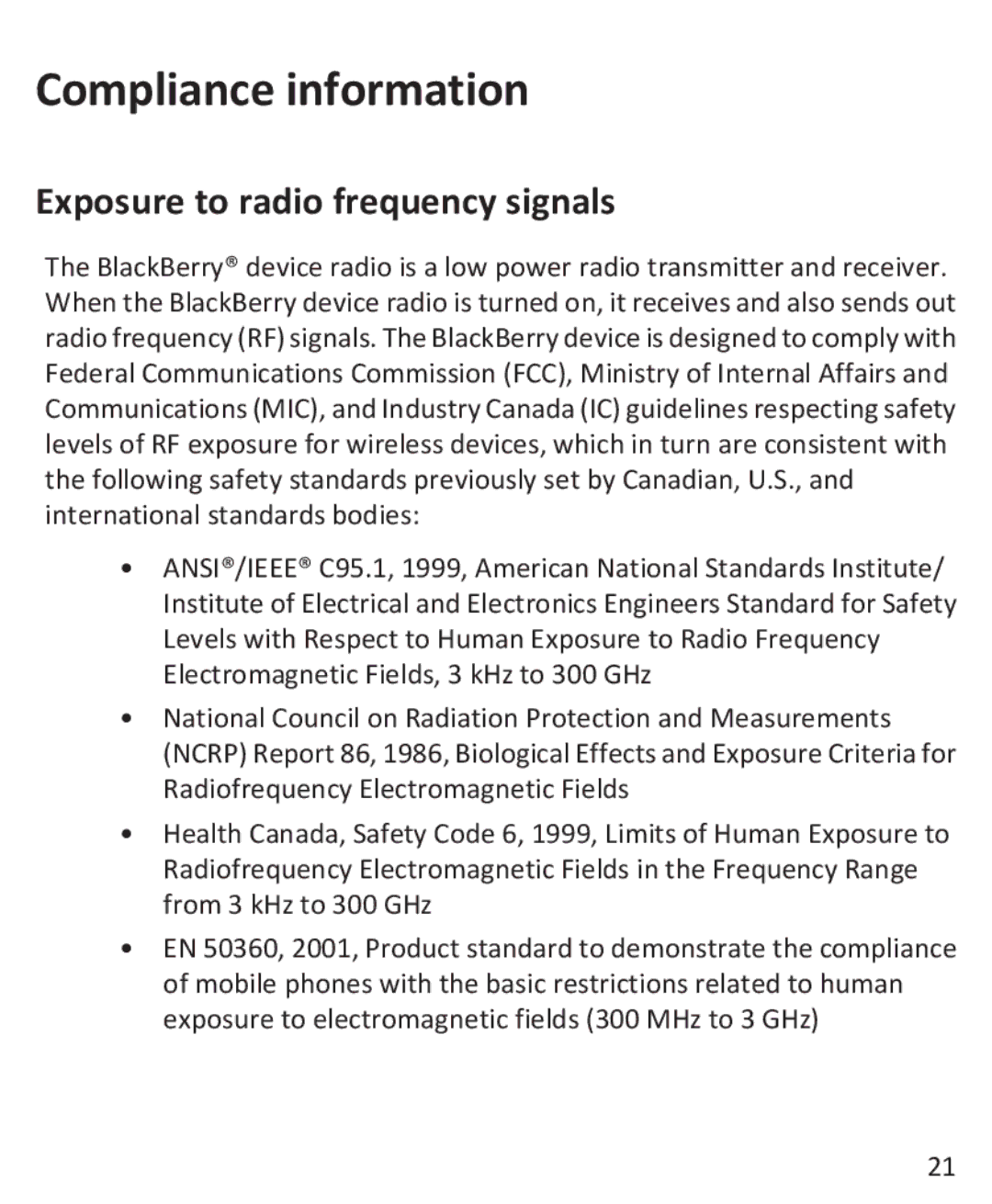9800 specifications
The BlackBerry 6800 series, including the notable BlackBerry Torch 9800, represents a significant milestone in mobile technology at the time of its release. Launched in 2010, the Torch 9800 was one of the first devices to combine a touchscreen interface with a physical QWERTY keyboard, catering to both touchscreen enthusiasts and classic BlackBerry users who appreciated tactile feedback.One of the standout features of the BlackBerry Torch 9800 is its distinctive design. It incorporates a slider form factor, allowing users to slide open the device to reveal the full QWERTY keyboard. This design not only enhances the usability of the device for typing but also contributes to a compact form factor, making it easy to carry. The touchscreen is a 3.2-inch display with a resolution of 480 x 360 pixels, providing vibrant visuals for applications and media.
The operating system at the heart of the Torch 9800 is BlackBerry OS 6, which introduced several enhancements over previous iterations. Users enjoyed a more intuitive interface, including a unified inbox for emails, messages, and social media updates. The improved browser provided a better web experience, complete with tabbed browsing and support for multimedia content.
In terms of connectivity, the BlackBerry Torch 9800 offered a robust set of options. It featured 3G support, Wi-Fi capabilities, and Bluetooth technology, allowing users to remain connected in various ways. The device also included a 5-megapixel camera, complete with autofocus and video recording capabilities, further solidifying its appeal to media-conscious users.
An important aspect of the BlackBerry experience is its renowned security features. The Torch 9800 provided enterprise-level security, making it a popular choice for business users who needed to ensure the safety of their communications and data.
With a decent battery life, the BlackBerry Torch 9800 catered to users who relied heavily on their devices throughout the day. The combination of features, along with its unique design, made the Torch 9800 a landmark device in the evolution of smartphones. While the mobile landscape has significantly changed since its release, the impact of the BlackBerry Torch 9800 and its features remain a notable part of mobile technology history.
